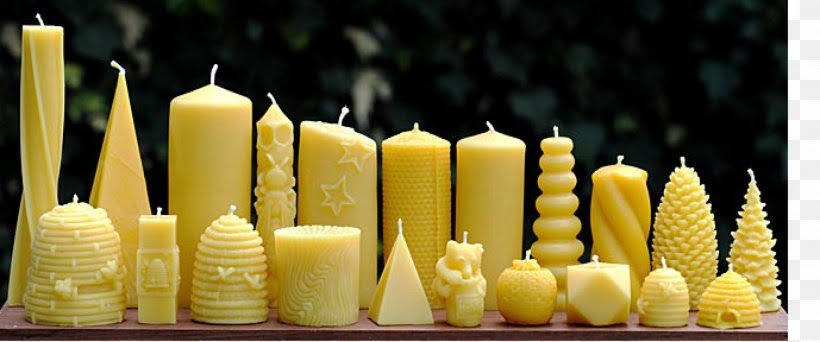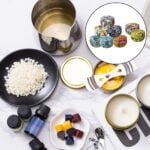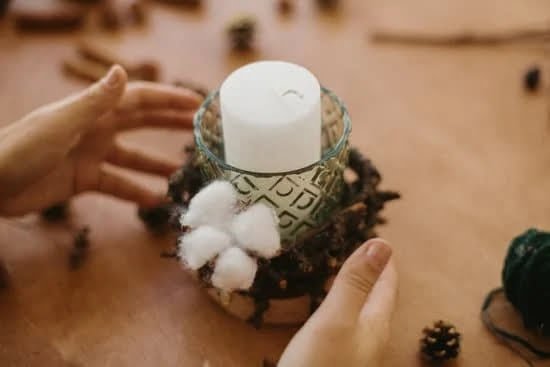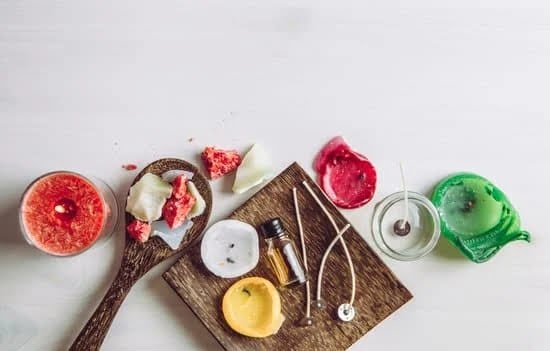Are you struggling with glass adhesion issues when making candles? In this article, we will explore the importance of proper glass adhesion in candle-making and provide solutions to common problems encountered.
Creating a well-adhered bond between the wax and the glass container is crucial for the overall quality and performance of your candles. Understanding the causes of poor adhesion, selecting the right glass containers, proper surface preparation, choosing the right adhesive, and applying it correctly are all vital steps in achieving optimal results.
The candle-making process involves adhering wax to the inner surface of glass containers to create beautiful and functional candles. However, many candle makers encounter difficulties in achieving strong adhesion between the wax and glass. Common problems include poor adhesion, uneven bonding, or complete detachment of the wax from the container.
These issues can lead to unsightly candles and affect their burn quality. In this article, we will delve into various aspects related to glass adhesion in candle-making to help you troubleshoot and fix any problems you may encounter.
Understanding why poor glass adhesion occurs is essential for identifying effective solutions. Factors such as temperature, humidity, and the type of wax used can all contribute to adhesion issues.
In addition to these factors, selecting high-quality glass containers, properly preparing their surfaces, choosing suitable adhesive products, and applying them correctly play significant roles in ensuring successful glass adhesion. Through this comprehensive guide, you will gain valuable insights into each step involved in addressing common problems with glass adhesion when making candles.
Understanding the Causes of Poor Glass Adhesion
When it comes to making candles, achieving proper glass adhesion is crucial for producing high-quality and long-lasting products. However, many candle makers encounter problems with glass adhesion that can result in issues such as uneven burning or poor structural integrity. Understanding the causes of poor glass adhesion is essential for addressing these concerns and improving the overall quality of your candles.
Several factors can contribute to poor glass adhesion when making candles. One significant factor is temperature, as both the ambient temperature and the temperature of the wax can impact how well it adheres to the glass surface. Additionally, humidity levels in the environment where candles are being made can also affect adhesion. The type of wax being used is another important consideration, as different waxes have varying properties that can influence their ability to adhere to glass.
Selecting the right glass containers for candle-making is crucial for achieving optimal adhesion. It’s essential to choose high-quality glass containers that are clean and dry, as any imperfections or contaminants on the surface can hinder proper adhesion. By ensuring that you start with suitable containers, you can minimize potential adhesion issues from the outset.
| Factors Contributing to Poor Glass Adhesion | Impact |
|---|---|
| Temperature | Varying temperatures affect how well wax adheres to the glass surface |
| Humidity | High levels of humidity in the environment can hinder proper adhesion |
| Type of Wax | Different waxes have varying properties that impact their ability to adhere to glass |
Selecting the Right Glass Containers
When it comes to making candles, the choice of glass containers plays a crucial role in ensuring proper adhesion. Selecting the right glass containers can prevent common problems such as poor adhesion, wax leakage, and uneven burning. To avoid encountering these issues, it is essential to carefully consider the quality and characteristics of the glass containers used for candle-making.
One key factor to consider when selecting glass containers for candle-making is the type of glass. It is recommended to choose containers made from high-quality, heat-resistant glass that can withstand the temperature changes associated with candle-burning. Additionally, opt for smooth-surfaced glass containers rather than textured or uneven ones, as these may not provide a secure surface for adhesion.
Another important consideration is the cleanliness and dryness of the glass containers. Before pouring hot wax into the containers, ensure that they are thoroughly cleaned and completely dry. Any residue, moisture, or oils on the surface of the glass can hinder proper adhesion and affect the overall quality of the finished candles. By selecting clean and dry glass containers, you are laying a strong foundation for successful adhesion in your candle-making process.
Finally, consider the size and shape of the glass containers in relation to your specific candle-making project. The size of the container should be proportional to the amount of wax being poured, and its shape should complement the aesthetic appeal you wish to achieve with your candles. Selecting appropriate sizes and shapes not only contributes to better adhesion but also enhances the overall visual impact of your finished candles.
By carefully considering these factors when selecting glass containers for candle-making, you can significantly improve adhesion and minimize potential problems in your candle production process. Understanding how to fix problems with glass adhesion when making candles begins with making informed choices about your glass container selection.
Proper Surface Preparation
When it comes to achieving proper glass adhesion when making candles, one of the crucial steps is ensuring that the surface of the glass containers is well-prepared. Here are some essential tips for preparing the glass surfaces effectively:
- Start by thoroughly cleaning the glass containers with a mild detergent or glass cleaner to remove any dust, oils, or residues that may hinder adhesion.
- Rinse the containers with clean water and ensure that they are completely dry before proceeding with the candle-making process.
- Consider using rubbing alcohol or vinegar to wipe down the glass surfaces to remove any remaining contaminants and ensure optimal adhesion.
It’s important to note that any residue or dirt present on the glass surfaces can adversely affect the adhesion of the wax and lead to potential issues in candle-making. By following these steps for proper surface preparation, you can significantly improve the adhesion of wax to the glass containers.
In addition, if you encounter persistent problems with glass adhesion despite thorough cleaning, consider lightly sanding the surface of the glass containers to create a better bonding surface for the wax. This method can help resolve adhesion issues caused by smooth or non-porous glass surfaces.
By taking the time to properly prepare the glass surfaces before making candles, you can minimize potential adhesion problems and ensure that your candles adhere securely to their containers. These simple yet effective techniques can make a substantial difference in achieving successful candle-making results.
Choosing the Right Adhesive
When it comes to achieving proper glass adhesion when making candles, selecting the right adhesive is crucial. The type of adhesive used can significantly impact the bond between the glass container and the wax, ultimately affecting the overall quality and performance of the candle. Here are some important considerations for choosing the right adhesive:
- Consider the type of glass: Different types of glass may require different adhesives for optimal adhesion. For example, if you are working with a non-porous glass surface, such as tempered glass, you will need an adhesive specifically designed for bonding to non-porous materials.
- Temperature resistance: Since candles are often exposed to heat, it’s essential to choose an adhesive that can withstand high temperatures without losing its bonding properties. Look for adhesives that are heat-resistant to ensure longevity and durability.
- Compatibility with wax: Some adhesives may react negatively with certain types of candle wax, leading to poor adhesion or discoloration. Be sure to select an adhesive that is compatible with the specific type of wax you are using in your candles.
It’s important to note that there are several types of adhesives commonly used in candle-making, each with its own set of pros and cons.
- Epoxy resin: This type of adhesive provides a strong and durable bond, making it suitable for long-lasting candles. However, it may require mixing before application and can be more challenging to work with.
- Hot glue: Hot glue guns offer a convenient and quick way to adhere wicks to glass containers. While they are easy to use, hot glue may not provide as secure a bond compared to other types of adhesives.
- Craft adhesive: Craft adhesives specially formulated for glass bonding offer a good balance between ease of use and reliability. Look for products specifically designed for candle-making purposes for best results.
By carefully considering these factors and evaluating the options available, you can confidently choose the right adhesive for optimal glass adhesion when making candles.
It’s also important to ensure that any adhesive used is applied correctly according to the manufacturer’s instructions. Failure to do so can result in subpar adhesion and potential issues down the line. With the right adhesive chosen and applied properly, you can significantly improve glass adhesion in your candle-making process and create high-quality products that meet your standards.
Applying the Adhesive Correctly
When it comes to achieving proper glass adhesion when making candles, applying the adhesive correctly is crucial for ensuring a secure bond between the glass container and the wax. Whether you are using a traditional paraffin wax or a natural soy wax, the process of applying the adhesive plays a significant role in determining the success of your candle-making venture.
Detailed Instructions on Application
To ensure that the adhesive is applied correctly, start by cleaning and drying the surface of the glass container thoroughly. Any residue, oils, or dirt can hinder proper adhesion, so it’s essential to remove these impurities before applying the adhesive.
Once the surface is clean and dry, carefully apply an even layer of adhesive to the areas where the wax will come into contact with the glass. It’s important to follow the manufacturer’s instructions regarding application techniques and any specific precautions.
Tips for Avoiding Common Mistakes
One common mistake when applying adhesive is using too much or too little product. Applying too much adhesive can lead to unsightly drips or leaks, while too little may result in inadequate adhesion. It’s important to strike a balance and apply just enough adhesive to create a secure bond without excess buildup.
Additionally, be mindful of air bubbles that may form during application. These can create weak spots in the bonding process, so take care to smooth out any bubbles as you apply the adhesive.
Ensuring Even and Secure Adhesion
After applying the adhesive, carefully press the glass container down onto the surface where it will be placed while making sure that it is positioned evenly and securely. Any misalignment at this stage can lead to uneven pressure distribution and compromise adhesion. Once in place, allow sufficient time for the adhesive to set and cure according to its recommended drying time.
By following these steps for applying adhesive correctly when making candles, you can significantly improve glass adhesion and achieve better results in your candle-making endeavors.
Allowing Sufficient Drying Time
When it comes to achieving proper glass adhesion when making candles, allowing sufficient drying time for the adhesive is crucial. Failure to do so can result in weak adhesion, causing the candle to detach from the glass container. To prevent this common problem, it’s important to understand how different types of adhesives require varying drying times and conditions.
One key factor that affects drying time is the type of adhesive used. For example, hot glue dries quickly but may not provide a strong enough bond for larger or heavier candles. On the other hand, epoxy or heat-resistant silicone adhesives may require several hours or even a full day to cure properly. Understanding the specific properties of your chosen adhesive will help you determine the optimal drying time needed for secure glass adhesion.
Another consideration for allowing sufficient drying time is environmental conditions. High humidity levels can prolong drying time, while low humidity levels can speed up the process. Additionally, temperature plays a significant role in how quickly an adhesive cures. Warmer temperatures generally facilitate faster drying, while cooler temperatures may extend drying time significantly. It’s important to take these factors into account and create ideal conditions for proper adhesion.
Lastly, ensuring that the glass containers are left undisturbed during the drying process is essential for achieving strong adhesion. Any movement or disturbance during the curing period can compromise the bond between the glass and the adhesive. By carefully following recommended drying times and creating optimal environmental conditions, you can significantly improve glass adhesion when making candles.
| Glass Adhesion Tips | Details |
|---|---|
| Type of Adhesive | Different types have varying drying times |
| Environmental Conditions | Humidity and temperature affect drying time |
Troubleshooting Common Issues
When making candles, ensuring proper glass adhesion is crucial to the overall quality and safety of the final product. Despite taking all the necessary steps to achieve optimal adhesion, candle-makers may still encounter some common problems along the way. Understanding these issues and learning how to address them effectively can significantly improve the outcome of your candle-making process.
One common issue that candle-makers may encounter is poor adhesion resulting in the glass containers becoming loose or detached from the wax. This problem can be attributed to various factors, including inadequate surface preparation, improper adhesive application, or using a low-quality adhesive. To fix problems with glass adhesion when making candles, it is important to first identify the root cause of the issue.
Another issue that may arise is a cloudy or hazy appearance on the glass surface after applying the adhesive. This not only affects the aesthetics of the candle but also indicates potential adhesion issues.
The cloudy appearance can be caused by using an adhesive that is not suitable for glass surfaces or by not allowing sufficient drying time for the adhesive to set properly. Addressing this problem involves selecting the right adhesive for glass adhesion and ensuring that it is applied and allowed to dry according to manufacturer recommendations.
In some cases, air bubbles may form between the glass container and the wax, leading to poor adhesion and a less professional-looking finished product. These air bubbles are often caused by uneven application of adhesive or by not allowing sufficient drying time for each layer of adhesive.
To fix this issue, it is important to follow proper application techniques and allow each layer of adhesive to dry completely before adding another layer or proceeding with filling the container with wax. By identifying these common issues and following recommended solutions, candle-makers can overcome challenges related to glass adhesion and produce high-quality candles with secure and visually appealing attachments.
Conclusion
Achieving proper glass adhesion when making candles is crucial for ensuring the longevity and safety of the finished product. Without secure adhesion, candles may become loose in their containers or pose a risk of breaking, leading to potential hazards. In this section, we will discuss troubleshooting common issues and providing tips on how to fix problems with glass adhesion when making candles.
Identifying Common Problems
When encountering issues with glass adhesion in candle-making, it’s important to first identify the specific problem at hand. Whether it’s the wax not adhering properly to the glass surface, or if the adhesive is failing to create a strong bond, understanding the root cause of the issue is essential for finding an effective solution.
Solutions for Glass Adhesion Problems
If you’re facing challenges with glass adhesion during candle-making, there are several steps you can take to address these issues. One common problem is inadequate surface preparation, which can lead to poor adhesion. Ensure that the glass containers are thoroughly cleaned and dried before applying any adhesive or wax. Additionally, choosing the right adhesive for your specific type of glass and wax can make a significant difference in achieving proper adhesion.
Seeking Professional Advice
In some cases, despite following all recommended steps and guidelines, problems with glass adhesion may persist. If you’ve exhausted all troubleshooting methods without success, consider seeking advice from professionals in the candle-making industry. They may offer valuable insights and alternative solutions that could help resolve persistent issues with glass adhesion when making candles.
Additional Resources
In conclusion, achieving proper glass adhesion when making candles is essential for a successful and high-quality end product. Understanding the causes of poor adhesion, selecting the right glass containers, properly preparing the surfaces, choosing suitable adhesive, applying it correctly, and allowing sufficient drying time are all crucial steps in this process. By following these guidelines and troubleshooting common issues that may arise, candle makers can ensure that their candles adhere securely to the glass containers.
It is important to remember that attention to detail and patience are key when addressing glass adhesion issues. By implementing the tips and techniques discussed in this article, candle makers can overcome challenges related to poor glass adhesion. Whether it’s ensuring cleanliness and dryness of the glass containers or selecting the appropriate adhesive for specific conditions, taking these factors into account will lead to better results in candle-making.
To those seeking more in-depth information on glass adhesion in candle-making, there are various resources available including recommended products, tools, and further reading to expand your knowledge on this topic. With a thorough understanding of how to fix problems with glass adhesion when making candles, candle makers can elevate their craft and produce high-quality products that meet consumer expectations.
Frequently Asked Questions
Why Is My Candle Not Sticking to the Glass?
There are a few reasons why a candle may not stick to the glass. One common reason is that the container was not properly prepped before pouring the wax, which can prevent adhesion.
Another reason could be that the type of wax used may not be suitable for glass adhesion. Additionally, pouring the wax at too high of a temperature or using a low-quality wax can also cause the candle to not stick to the glass.
Why Do My Candles Pull Away From the Glass?
Candles pulling away from the glass can occur due to several factors. One possible cause is rapid temperature changes, such as placing the candle in a drafty area or near air conditioning or heating vents.
Another reason could be using a wax that shrinks as it cools, creating gaps between the wax and the glass. Inadequate adhesion during the pouring process can also lead to candles pulling away from the glass.
What Is the Best Wax for Glass Adhesion?
The best wax for glass adhesion depends on various factors such as fragrance load, color, and burn characteristics desired for the candle. Generally, waxes with additives designed specifically for better adherence to glass are preferred, such as paraffin blends or soy waxes made for container candles.
It’s important to consider these factors when choosing a wax to ensure good adhesion without compromising other performance aspects of the candle.

Welcome to my candle making blog! In this blog, I will be sharing my tips and tricks for making candles. I will also be sharing some of my favorite recipes.





